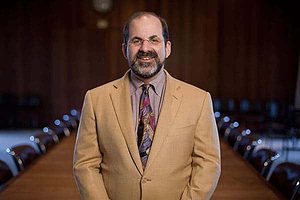The Stanford News Service recently made an interview with Jon Krosnick, a Stanford professor of communication and of political science who conducts survey research on how people view climate change. It’s a most compelling read, one I advise those of you interested in the subject of climate change and the politics behind it to go through it. Some of the key insights from the interview are the numbers – 73 percent of Americans believe global warming is real and 79 percent favor some sort of government intervention on the issue.
Climate change is real because people ‘feel’ it’s real
Some of you might find these numbers off, especially if you have a lot of friends who watch Fox News, but apparently most Americans believe climate change is real, and a lot more used to believe its real in previous years.
“This percentage peaked in 2006 and 2007 at about 85 percent. That was a time when the news media were paying a tremendous amount of attention to the issue and the time when Al Gore’s movie, An Inconvenient Truth, was in theaters. There are many possible explanations for the 10 percentage point decline that occurred between 2007 and 2009, including the economic recession, the “climategate” controversy and more. (In 2009, a hacker illegally obtained emails from an English university that skeptics used to argue that global warming was a manufactured crisis. Scientists countered that the emails were taken out of context. The incident became known as “climategate.”),” said Krosnick.
So why do Americans, or most of the people in the developed world for that matter, believe human induced climate change is real? It’s not the studies, press releases by climate scientists or even the official IPCC report that concludes with 95% certainty that anthropogenic climate change is a reality. Most people choose to believe what they can physically experience. In our case, unusual temperature variations and seasonal shifts have people convinced that climate change is real, not the actual science.
“[..] But our research indicates that the explanation most likely is changing average world temperatures. About one-third of the country does not trust environmental scientists, and those citizens decide whether global warming has been happening by paying close attention to the last year’s average world temperature.
The year after that temperature rises (as when 2010 was the warmest year on record), those individuals are more likely to say that global warming has been happening,” Krosnick says.
Some 81 percent of Americans said the federal government should limit the amount of greenhouse gasses that American businesses emit, however only 49 percent of Americans (no majority) believe the government should make efforts to cut greenhouse gas emissions by power plants, which are actually the prime emitters and the target of President Obama’s recent Environmental Protection Agency regulations.
So, is this good news or bad news? Personally, I feel dishearten because even though the conclusion people reach about their surroundings may be true, the means or path they used to do so can be tricky. If you base your conclusions only on the effects (ie hotter summers), and fail to look at the causes too, then you’ll always be at risk of being wrong.










